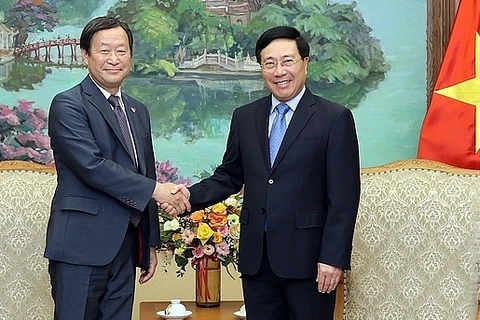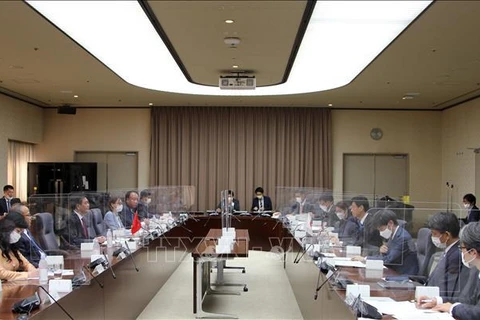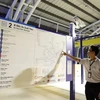Hanoi (VNA) - A ceremony was held on July 28 in Hanoi to send off 150 Vietnamese nurses and caregivers who will work in Japan under the Vietnam-Japan Economic Partnership Agreement (VJEPA).
The event was held jointly by the Department of Overseas Labour under the Ministry of Labour, Invalids and Social Affairs (MoLISA), the Japanese Embassy in Vietnam, and Japanese Language School ARC Academy.
The Vietnamese candidates have successfully completed Japanese language courses and met all other requirements under the VJEPA programme.
Since 2012, the VJEPA programme has launched a total of 10 training courses and has taken nearly 1,700 Vietnamese candidates to work at various hospitals and elderly care facilities in Japan.
The department will receive applications for the next course until October 31, 2022. Those who wish to join can send profiles to its headquarters, at 41B Ly Thai To, Hoan Kiem Hanoi.
Pham Viet Huong, deputy director of the department, said Japan is facing a serious workforce shortage, especially in health care, noting that 240 nurses and caregivers would be admitted to the 11th course.
The candidates are all under 35 years old and have graduated from colleges or universities majoring in nursing and general nursing. The selected candidates will be supported by the two governments with the full cost of one-year Japanese language learning, accommodation and living expenses during the training process.
While studying and working in Japan, they are entitled to a monthly salary of 160,000-180,000 JPY (1,172 USD-1,318 USD).
The programme is a highlight of the human resources cooperation relationship between Vietnam and Japan.
The Japanese side has reported very good assessment of Vietnamese candidates. The pass rate of the Vietnamese candidates taking the Japanese national certification test is the highest among countries sending candidates, which include the Philippines and Indonesia. The rate for Vietnam's caregiver and nurse candidates are more than 90% and 70%, respectively.
Vietnamese nurses and caregivers have been highly evaluated for their hardworking and enthusiasm at work, with high professional and Japanese language capacity.
Therefore, the demand for Vietnamese nurses and caregivers is higher than the number of recruited and trained candidates each year. Currently, Japanese medical facilities have signaled that they are keen to receive more nurses and caregivers from Vietnam.
Hayashi Mikio, First Secretary at the Japanese Embassy in Vietnam, said that high evaluation of Vietnamese nurses and caregivers by Japanese hospitals and nursing homes is manifested in the high ratio that pass the Japanese national tests. This validates the efficient cooperation of agencies from both countries as well as the Japanese teaching centres.
He said that the programme is also appreciated by the Japanese Government.
As the supply of nurses and caregivers is below Japan’s demand, the country is offering attractive policies to lure more candidates, he noted.
Vietnamese continued to be the second biggest foreign community in Japan after China, despite a 3.4 percent drop in 2021, according to the the Immigration Services Agency of Japan (ISA).
According to the agency, the number of Vietnamese people in Japan reached 432,934, accounting for 15.7 percent of the total foreigners in the country.
The Republic of Korea came third with a community that made up 14.8 percent of total foreigners in Japan, followed by those from the Philippines and Brazil with 10.5 percent and 7.4 percent respectively.
As of the end of 2021, Japan had hosted over 2.76 million foreigners, down 4.4 percent from the same period last year, mostly because of tighter border management due to COVID-19 pandemic.
The agency reported that last year, the number of foreigners who were requested to leave Japan for violating immigration regulations fell by 1,328 to 4,122./.























